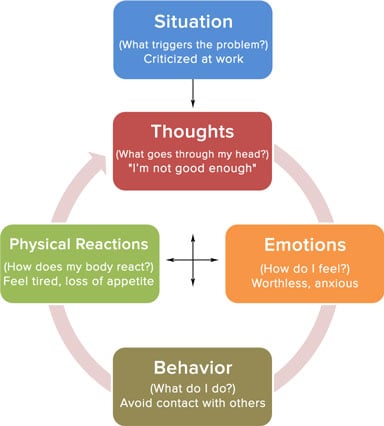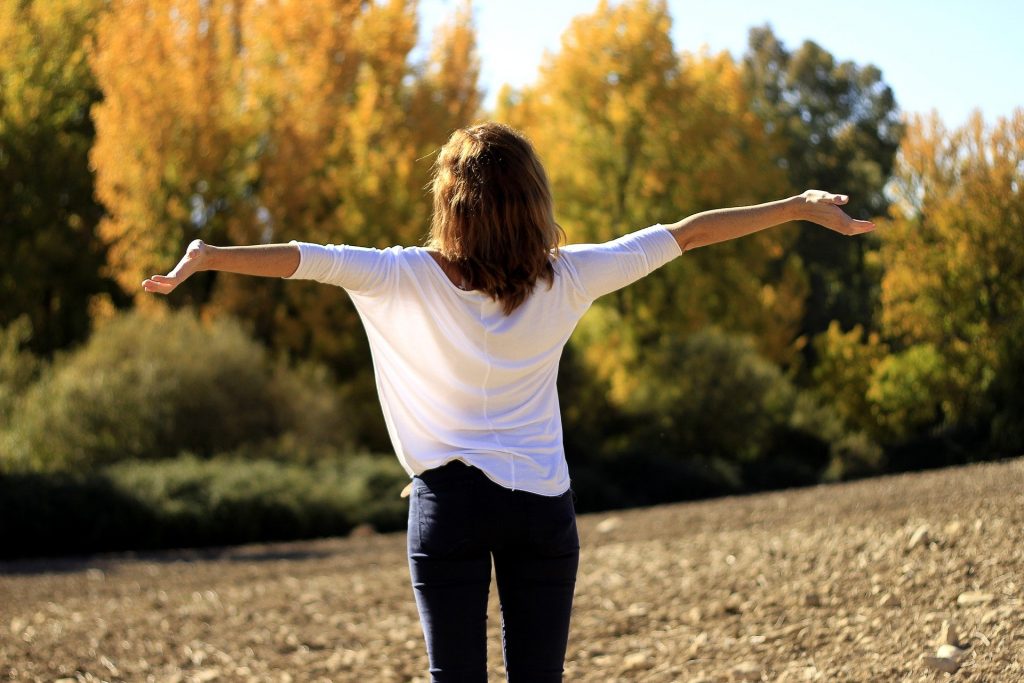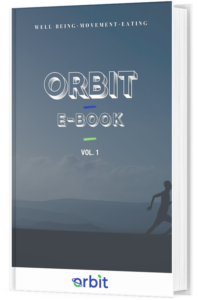Emotional regulation is a person’s ability to effectively manage and control their emotional state. There are healthy and unhealthy emotional regulation strategies, which impact one’s behavior, and one’s bodily reaction to that behavior.
Emotional Regulation Strategies1,2
As humans, we unconsciously use emotional regulation strategies throughout the day to cope with the environment around us. Depending on the strategy we choose, it can be beneficial for our psychological health, or it can result in lasting damage.
Here are some examples of healthy emotional regulation strategies:
- Doing physical activity
- Writing in a journal
- Meditating
- Sleeping enough
- Acknowledging when you need a break
- Being able to identify strong negative emotions
- Engaging in relaxation exercises before, during or after identification of strong emotions
Here are some examples of unhealthy emotional regulation strategies:
- Drinking too much alcohol
- Smoking drugs, or cigarettes
- Self-injury
- Avoiding or suppressing negative situations
- Verbal or physical aggressivity
- Isolating yourself, or spending too much time on technological devices (living in a “virtual reality”)
- Regularly overeating to the point of physical pain
Vicious Emotional Cycle1,2
Emotional dysregulation refers to a person who regularly uses unhealthy regulation strategies to cope with his/her negative emotions. People who feel intense negative emotions, more often than not, are more likely to cope with unhealthy regulation strategies.
Interestingly, the emotion itself is not what causes the harm. The analysis and judgement of that emotion that is most detrimental. Creating numerous story lines explaining why we are experiencing that emotion leads to a “vicious emotional cycle.” The vicious emotional cycle depicts the way in which thoughts, emotions, and behaviors are intertwined.

Changing your Thoughts
Scenario 1
For example, your trigger is that your partner asks you to consider him when making plans for the weekend. Then, the subsequent thought about that request is that you never consider his opinion, and that he is trying to control what you do on the weekend. You then experience emotions relating to that thought; such as anger. As a result, you isolate yourself, and stop talking to him. Your body’s physical reaction in response to this behavior may be increased stress, feeling tired, feeling depressed. You will continue interpreting or thinking about the situation that triggered the vicious emotional cycle, which only heightens the negative emotions, and negative physical state. This is an example of how small events can trickle into a huge emotional strain.
Research has shown that your thoughts precede your emotions. For example, anger is an emotion that results from the thought that someone or something prevented you from achieving your goal. The external situation is not the source of your emotions or behaviors, it is your thought about that situation! This means that you can change the way you think about the same situation that might have caused negative emotional states in the past!
Scenario 1 – Modified
Let’s go back to the example used above, but change your initial thought: The subsequent thought after having been asked by your partner to consider him more when making plans for the weekend is: “Oh! I hadn’t noticed that I was not considering you! Thanks for letting me know.” Approaching the situation with more curiosity, and less judgement will result in more positive emotions, such as gratitude, and joy about the fact that your partner trusts you to share his thoughts. Those emotions will also make you physically feel more energetic, and less anxious. As a result, you always make sure to ask your boyfriend his input before the weekend, which makes you both happier.
Taking Responsibility for your Happiness1
“No matter what the weather outside, the weather in my head is sunny”- Dr. Raghunathan, also known as Dr. Happysmarts
Taking responsibility for your happiness means that you have control over your thoughts, or over your internal environment. Be aware of the distinction of having control over others’ or outcomes, versus having control over yourself. On one hand, being controlling of your external environment would mean that you need others’ and outcomes to act or turn out as you expected to be happy. On the other hand, being controlling of your internal environment means that you can shape your thoughts to be positive, no matter the outcome.
Research has shown that when you have developed this ability to control your thoughts and emotions, your need for external control lowers.
Simple strategies to Regulate your Emotions1
Learning how to change your thoughts will not happen from one day to the next. As per many physical, and psychological skills, you must practice!
Here are some useful strategies you can incorporate into your daily life, recommended by Dr. Raghunathan:
- Label the negative emotion: Write down the emotion you feel. However, do not analyze it, or interpret different reasons for this emotion. This does not mean that you are avoiding the emotion! It simply allows you to not enter the vicious emotional cycle, in which you will lose control over the thought, and develop stronger negative emotions.
- Attention deployment: Guide your attention towards something positive, rather than keeping your focus on the negative. For example, I dropped a bag of coffee on the ground. I think: ‘Shout!’, but then direct my attention to how excited I am to play volleyball tonight.
- Cognitive reappraisal: Reinterpret the situation and put it into perspective. Coming back to the coffee example, I dropped the bag of coffee of the ground, say ‘Shout!’, then think to myself how lucky I am to have coffee grains. Not only do I have access to drinkable water, but I also have access to coffee.
References
1Raghunathan, R. (2016.) If you’re so smart, why aren’t you happy? Penguin Random House LLC.





